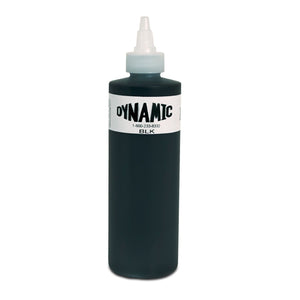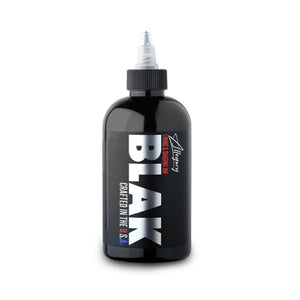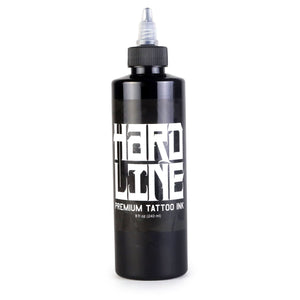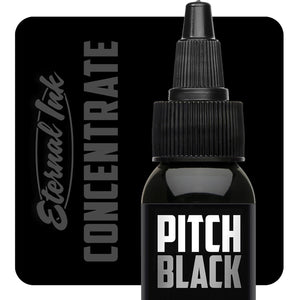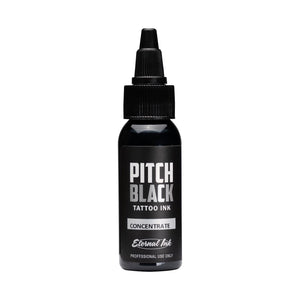What Are Blackout Tattoos?
Blackout tattoos are a type of tattoo that involves covering a significant area of the body, such as the arms or legs, with a solid, opaque layer of black ink. This technique creates a striking and bold look by saturating the skin completely with black pigment. Blackout tattoo meanings have historical roots in various cultures like Polynesian, South Asian, and Sub-Saharan African body art, where it was often associated with symbols of strength and status.
Despite their growing popularity, blackout tattoos have sparked controversy due to their permanence and the extensive process involved in their creation. These tattoos can be purely aesthetic or serve a functional purpose, such as covering up old, unwanted tattoos. They are characterized by their bold and striking appearance, making them a unique choice for individuals looking to make a statement.
History of Blackout Tattoos
The concept of blackout tattoos isn't new, but their popularity has surged in recent years. Traditionally, tribal cultures have used extensive black ink in their tattoo practices for centuries. However, the modern iteration of blackout tattoos, as we see today, emerged more recently within the broader tattoo community. Artists began experimenting with this style to explore new design possibilities and meet clients' needs for extensive cover-ups.

Design Variations to Consider
While the fundamental characteristic of blackout tattoos is extensive black ink coverage, there are variations within this style that can cater to different aesthetic preferences:
- Solid Black Coverage: The most straightforward approach, involving large areas of the skin covered entirely in black ink.
- Blackout with Negative Space: Incorporates uninked areas to create patterns or highlight certain parts of the design.
- Blackout with White Ink: After the black ink heals, white ink can be added on top to create intricate designs and contrasts.
- Geometric Patterns: Some blackout tattoos incorporate geometric shapes and lines within the black ink to add depth and complexity.
Pros & Cons of Blackout Tattoos
Pros
- Effective Cover-Up: Ideal for covering up large, unwanted tattoos that are difficult to remove or redesign.
- Unique Aesthetic: Offers a bold and striking appearance that stands out.
- Versatile Design Options: Can be customized with negative space, white ink, or geometric patterns.
Cons
- Pain and Time-Consuming: Due to the extensive coverage, blackout tattoos can be more painful and require multiple sessions to complete.
- Permanent Commitment: Removing or altering blackout tattoos is particularly challenging, making it essential to be certain about the decision.
- Healing Process: The aftercare and healing process can be more intensive compared to smaller tattoos.
Aftercare For Your Blackout Tattoo
Proper aftercare is crucial to ensure your blackout tattoo heals well and maintains its vibrant appearance:
- Follow Artist’s Instructions: Always adhere to the aftercare guidelines provided by your tattoo artist.
- Keep It Clean: Gently wash the tattooed area with antibacterial soap and lukewarm water.
- Moisturize: Apply a thin layer of a recommended moisturizing ointment to keep the skin hydrated.
- Avoid Sun Exposure: Protect your tattoo from direct sunlight to prevent fading. Or protect with a tattoo grade sun screen or lotion.
- Avoid Scratching: Refrain from scratching or picking at the tattoo as it heals to avoid scarring and uneven healing.
Blackout Tattoo Essentials
To create a blackout tattoo, tattoo artists typically require specialized tools and equipment to achieve the desired effect. Some essential tools needed for making a blackout tattoo include:
- Black Ink: High-quality black tattoo ink is crucial for blackout tattoos as it provides the dark, opaque coverage necessary to achieve the blackout effect. Artists often use dense black inks to ensure a solid and uniform appearance.
- Needles: Different types of tattoo needles are used for outlining, shading, and filling in areas during the tattooing process. For blackout tattoos, artists may select specific needle configurations to cover large areas efficiently.
- Pain Tolerance: Blackout tattoos often cover large areas of the body, which can result in prolonged tattoo sessions and potentially more discomfort compared to smaller designs. Understanding and being prepared for the pain associated with tattooing is crucial. Clients may need a local numbing anesthetic cream or spray.
- Aftercare: Following the tattooing process, proper aftercare is essential to facilitate healing and maintain the integrity of the tattoo. This may include keeping the tattooed area clean, applying recommended ointments, and avoiding activities that could damage the tattoo during the healing process.
Conclusion
Creating a blackout tattoo requires the expert use of specialized tools and equipment. High-quality black ink and precise needlework are crucial for achieving the desired dark and opaque coverage. Beyond technical skills, individuals contemplating blackout tattoos should be ready for potential discomfort due to the extensive nature of these designs and prioritize proper aftercare to ensure optimal healing and long-term tattoo integrity. By understanding the demands and commitments of blackout tattooing, both artists and clients can navigate the process with informed care and a deep appreciation for this bold and striking form of body art.













